Column Filed
“The true subversion of The Lego Movie is its subversion of mindless anticapitalist showbiz liberals.”
City Gentrifies
“Gentrification is a loaded, emotionally fraught fact of urban life that’s had a dramatic impact in neighborhoods across New York City,” and you can watch it happen here in GIF form.
Happy Kurt Cobain Day
“Aberdeen, Washington, the home town of Nirvana frontman Kurt Cobain — a place he once mocked as ‘Twin Peaks without the excitement’ — is holding its first annual Kurt Cobain Day on Thursday. Celebrations will include the unveiling of Cement Resurrection, a full-scale statue of Cobain by local artist Randi Hubbard, at the Aberdeen Museum of History. Local band Gebular will play a set expected to contain a number of Nirvana covers. And cupcakes, cookies and light refreshment will be served, according to mayor Bill Simpson.”
It's Good To Be Bad: 16 Villains We Don't Mind Rooting For
by Adam Clement
Being the good guy isn’t all it’s cracked up to be.
For every heroic act, there’s a foiled scheme — meticulously plotted until someone with an inconvenient sense of justice had to come along and spoil the fun. For every angel on our shoulder there sits a devil on the other. Sometimes, being bad is just more fun.
Such is the case with the following lot of so-bad-they’re-good guys who do the things we only wish we could, oozing charisma, and being cool to the point where we may actually prefer them to the hero. And that’s OK, because being bad means never having to say you’re sorry.

LEX LUTHOR, ‘SUPERMAN’
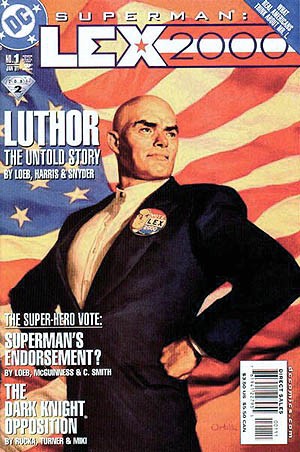
In the classic sports matchup, it’s more fun to root for the home team or the underdog. In the case of Superman’s arch-nemesis Lex Luthor, we have both. Consider that Luthor, unlike Kal-El, was not born into power with a laundry list of indomitable superpowers, but is instead a self-made man. According to modern canon, Luthor worked his way up from the slums to become the magnate of his own (exceedingly sinister) company.
And in spite of Superman’s more powerful adversaries, it should come as no surprise then that Luthor’s egomaniacal lust for power has often served as the ultimate foil against the Boy Scout hero. A human who can stand toe-to-toe with a demigod? That’s got to count for something — bald or not.
FRANK UNDERWOOD, ‘HOUSE OF CARDS’

The cold, calculating, hyper-articulate mastermind of Netflix’s House of Cards. You’re either immediately hooked by the guy or you’re not, and if Netflix’s numbers are any indication, a lot of us are. As a scorned House Majority Whip determined to dominate the political pecking order, Kevin Spacey’s masterfully manipulative Frank Underwood often breaks the fourth wall to let the audience in on his ulterior motives, much to our warped sense of entertainment. If only Washington were this interesting. Or honest.
This post is brought to you by the Jaguar F-TYPE Coupe. Visit BritishVillains.com to find out why it’s #GoodToBeBad.

TONY SOPRANO, ‘THE SOPRANOS’
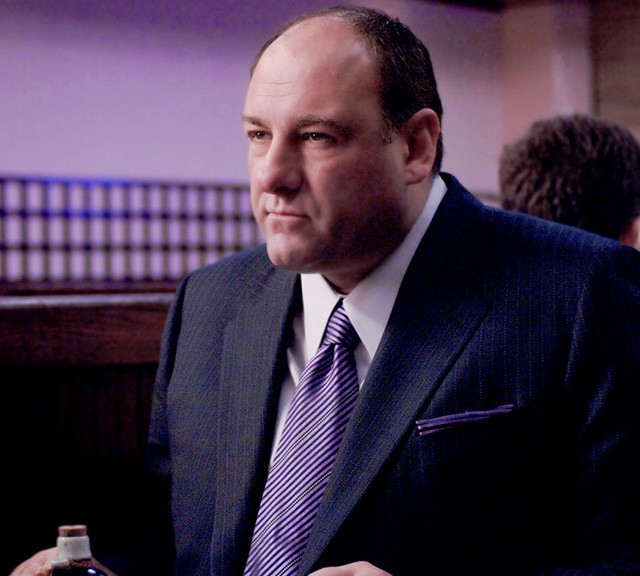
Crooked, unfaithful, deceptively intelligent and one of TV’s most complex antiheroes, the late James Gandolfini’s groundbreaking performance in HBO’s “family” drama throws out the mobster-as-a-monster cliché and injects a raw, human element into a character we could never fully bring ourselves to hate. More than anything, Soprano possesses an uncanny ability to charm everyone around him, including us.
Maybe we should be the ones in therapy.
LOKI, ‘THOR’
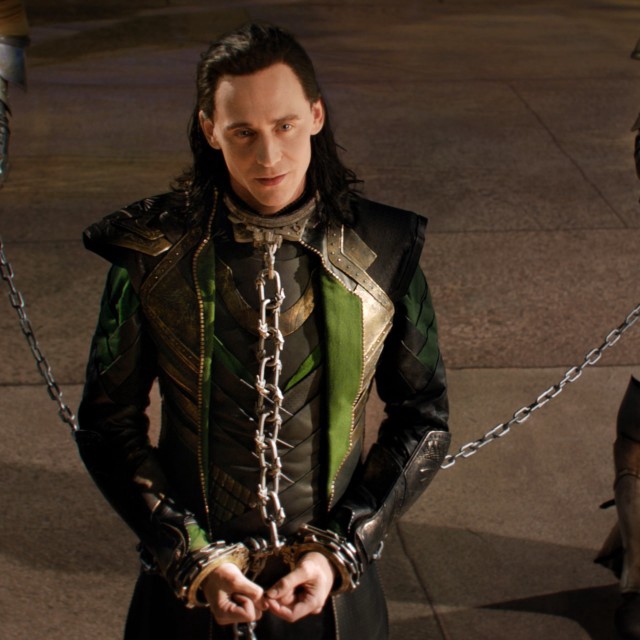
Loki’s character is effortlessly charismatic, darkly mischievous, and a genius of manipulation and trickery. Add to that his ability to stand toe-to-toe with Thor, and you’ve got the far more interesting part of this half-bromance, half-sibling rivalry. Not to mention that ultra-stylish helmet.
MAGNETO, ‘X-MEN’
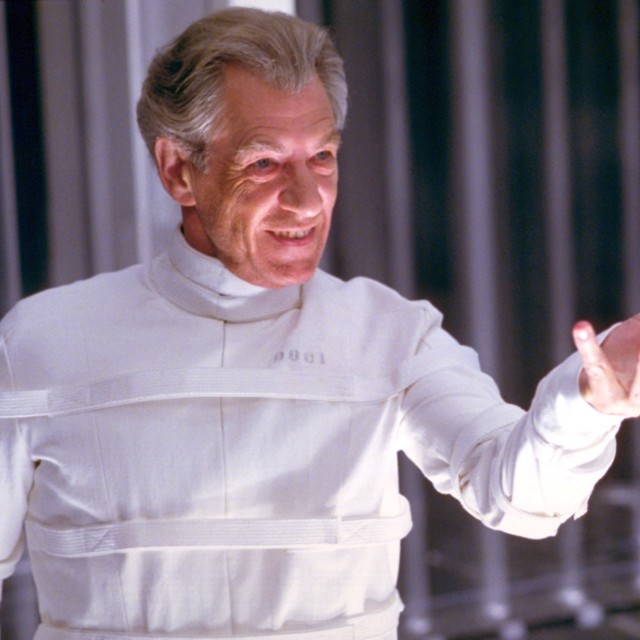
Born Erik Lehnsherr, a Jewish Holocaust survivor who approaches mutant civil rights a bit more aggressively than his pacifist peers, Magneto is more than a hokey costumed villain — he’s a mutant with a cause.
And while he may be on the wrong side of history fighting against the X-Men, Magneto’s cold and calculated misdeeds can be overlooked when you consider he’s only trying to make a life for his fellow mutants in this world. (Even if it’s at the expense of everyone else.)
DANIEL PLAINVIEW, ‘THERE WILL BE BLOOD’
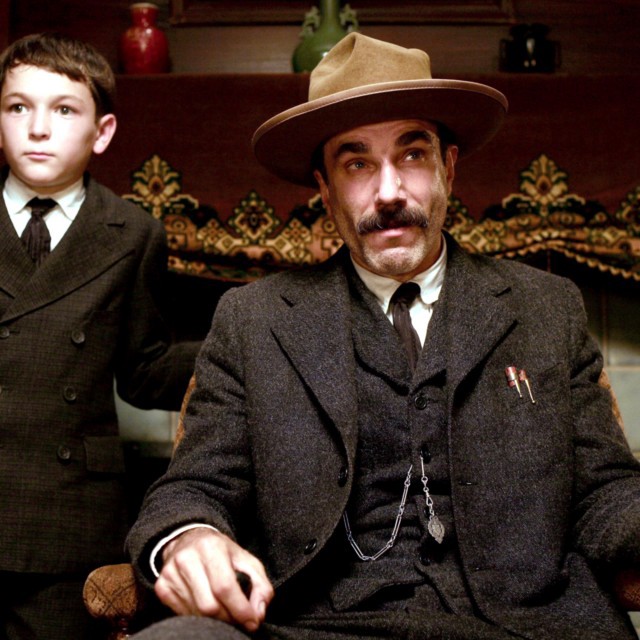
He’s a complete misanthrope driven only by the desire to be better than everyone else. He’ll call his own son a “bastard in a basket” before disowning him. Plainview, armed with a snake oil-salesman charm and iconic, gravely voice, comes off as early capitalism’s most entrancing antihero.
We don’t find ourselves rooting for the oil tycoon more than when he’s slapping around religious zealot Eli Sunday, trolling him into admitting he’s a false prophet, and drinking up his proverbial milkshake.
WALTER WHITE, ‘BREAKING BAD’
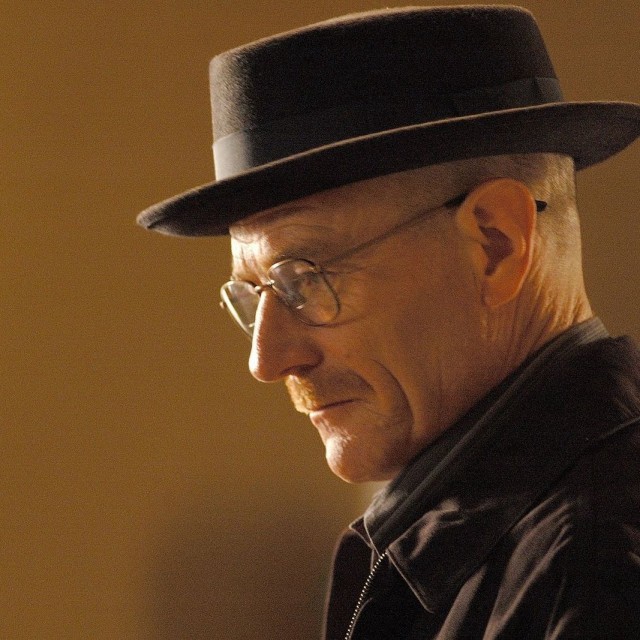
You’ve discovered you have terminal cancer and want to ensure security for your family once you’re gone. On a high school chemistry teacher’s salary? Get real.
What roundup of this ilk would be complete without Walter White’s Mr. Chips transformation into a frighteningly efficient meth kingpin? With his trademark pork pie hat and “Heisenberg” alter ego bordering on super-villain status, White’s fall from grace may make him less sympathetic as the series goes on, but for every awkward morning at breakfast with wife and son, there is a triumphant moment of a man taking control of his life, and winning.
COUNT DRACULA, ‘DRACULA’
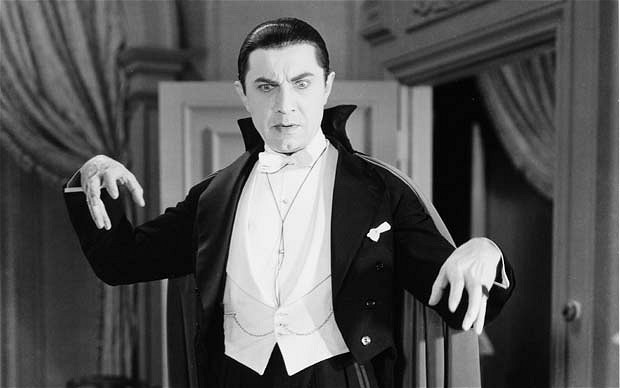
While much abused in cinema for the last few years, few vamps sunk their fangs into popular culture greater than the original Count of Universal’s 1931 classic. Defining Bram Stoker’s immortal vampire with an icy glare that both seduces and repels, Dracula’s mesmerizing, subdued allure only adds to his magnetism onscreen.
And if the Hungarian cadence doesn’t do it for you, recall that the count — like proper vampires not named Edward Cullen — can transform into a bat (which, by the way is clearly the most superior ‘Animorphs’ ability).
TONY MONTANA, ‘SCARFACE’
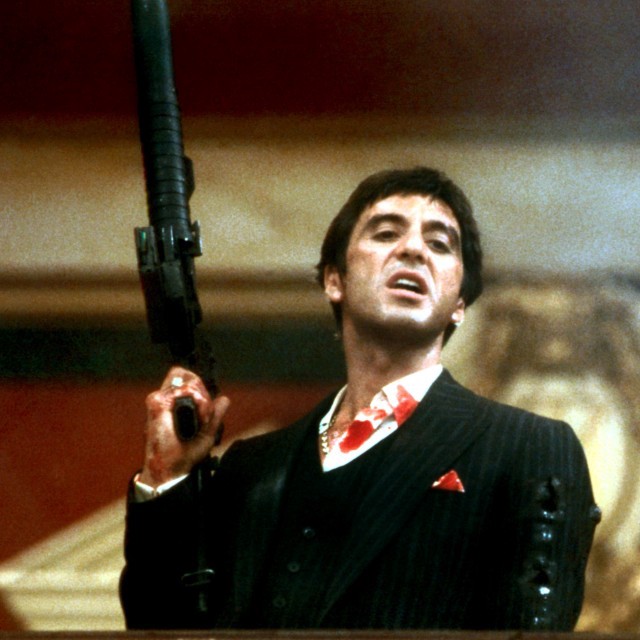
-TONY MONTANA, ‘SCARFACE’
“You don’t have the guts to be what you wanna be. You need people like me. You need people like me so you can point your f****** fingers and say, ‘That’s the bad guy.’”
If ‘Scarface’ taught us anything, it’s that “the world is yours” until you mess with the wrong Bolivian drug lord. Don’t do drugs, kids.
ALEX DELARGE, ‘A CLOCKWORK ORANGE’
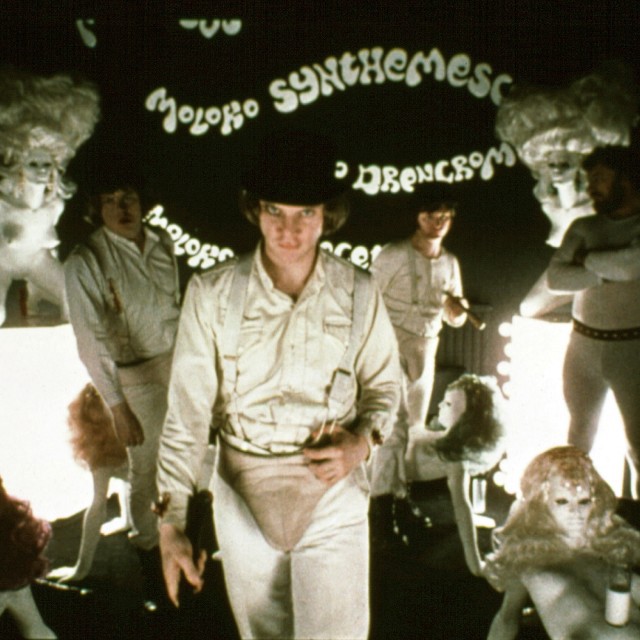
A nasty little droogy to be sure, but at what cost are we willing to forfeit our free will for the betterment of society? That’s the morality play posed using 15-year-old Alex DeLarge, the rapist, murdering delinquent we come to sympathize with once he’s stripped of his “ultraviolent” tendencies. But hey, it’s not our fault everything feels better set to Beethoven’s Ninth Symphony.
DEXTER MORGAN, ‘DEXTER’
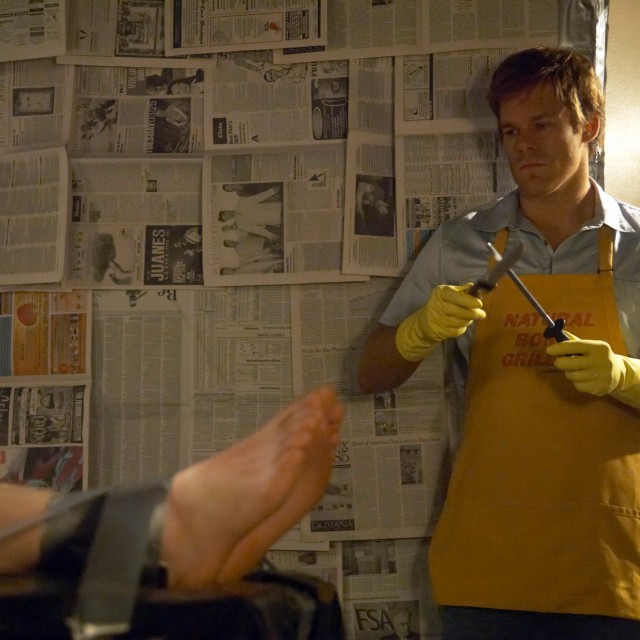
There’s a certain satisfaction watching karma catch up to those who don’t always get theirs, and then there’s bloody satisfaction you get when using your skills as a forensic analyst to moonlight as a vigilante serial killer to dispose of those who’ve evaded the justice system. If you’re Dexter Morgan, you can justify your bloodlust on a shaky code of ethics and some latent “dark passenger” within, but at the end of the day, two wrongs don’t make a right. (They do make a gory good show, though.)
THE JOKER, ‘THE DARK KNIGHT’

He’s the Clown Prince of Crime and the “why” antithesis to the Caped Crusader’s “so serious” sense of justice. You simply can’t have one without the other in what has become comics’ most strangely symbiotic love affair. Brought to life by a lip-smacking brilliant performance by the late Heath Ledger, the Joker’s mystique and anarchic sense of mayhem make him one of the screen’s most hypnotizing villains of all time.
After all, it’s simply not everyday a guy can dress up as a clown, blow up a hospital, and win an Oscar for it.
AURIC GOLDFINGER, ‘GOLDFINGER’
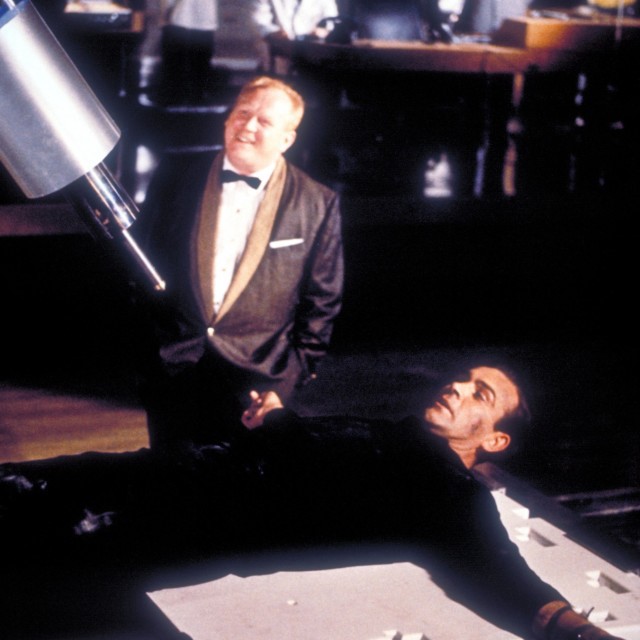
With over 50 years of James Bond baddies to pick from, it had to be the man with the Midas touch.
From his guns to his girls, everything he owns is gold. Boosting Goldfinger’s rank above the rest in Bond’s countless rogues gallery is his knack for henchmen (Oddjob) AND henchwomen (Pussy Galore), not to mention the fact that when he’s not proving he’s got the balls to rob the world’s largest gold supply, he’s threatening to laser them off our “shaken, not stirred” hero.
OZYMANDIAS, ‘WATCHMEN’
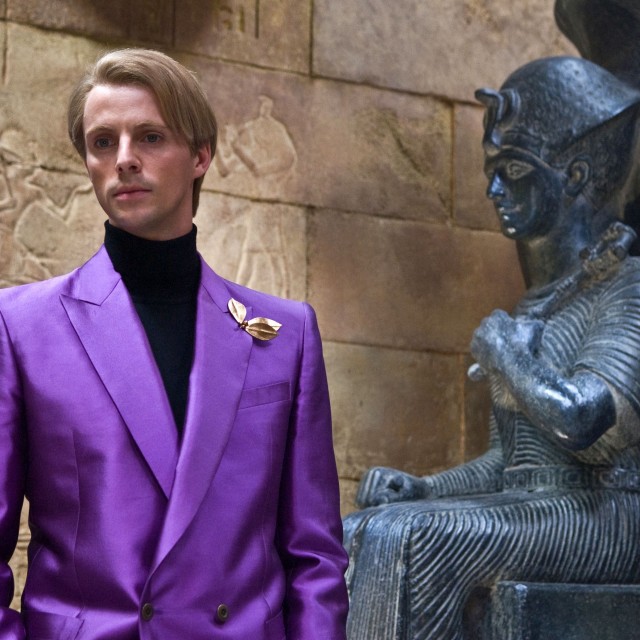
Like Batman, Ozymandias (real name Adrian Veidt) is the best at everything, having trained himself to the apex of his physical and mental capacities to the point where he can stop a bullet with his hand(!). Unlike Batman, however, he’s willing to cross “that” line to do what is necessary for “justice” in the fictional 1980s world run (still) by Richard Nixon and occupied by very human heroes.
By orchestrating the deaths of thousands, this calculating good guy-gone-bad does so to save billions on the brink of nuclear war — an advocate for “the ends justify the means” if there ever was one. Thus, the “villain” of ‘Watchmen,’ not unlike the graphic novel and film, is far more complicated than mere capes and criminals.
(Also, spoilers.)
AGENT SMITH, ‘THE MATRIX’
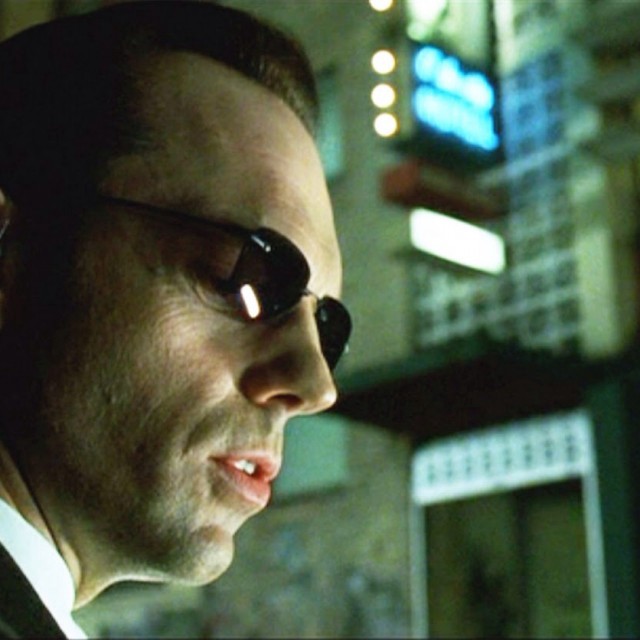
When you’re playing a villain opposite Keanu Reeves, you already have an edge thanks to the power of acting, but for Hugo Weaving’s sinister and stoic Agent Smith, it also helps being able to defy the laws of physics when going mano-a-mano with “the One.”
As the renegade program in a slick suit and pair of shades, Smith is a computer virus you actually don’t want to go away. Which says a lot, considering he’s as much a droning Greek chorus as he is wall-punching madman.
Nevertheless, it is thanks to his tendency to wax philosophical that he provides more than just a commanding showmanship to the hero’s lack thereof: a much-needed explanation for just what the hell is going on.
ROY BATTY, ‘BLADE RUNNER’
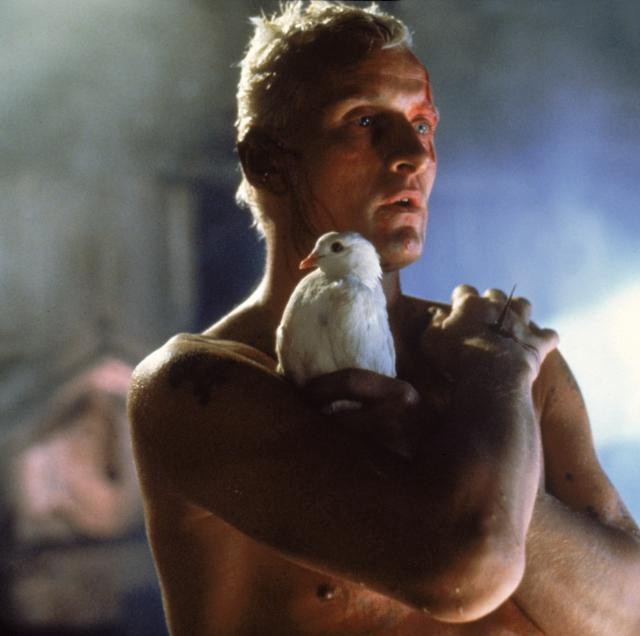
At first a menacing replicant only to become the very human soft spot of Ridley Scott’s sci-fi noir, Roy Batty — a villain in the most traditional sense — stands out as the film’s most developed and provocative character in the Harrison Ford-starring ‘Blade Runner.’
And while fans can bicker over whether Deckard was a human or replicant, what is certain is that, when Batty gains the empathy lacked by his kind and saves his adversary from certain death, his “tears in the rain” soliloquy will most certainly confirm that even the most intimidating villains are human after all.
Your "Vibrant" Economy Is Keeping Things Unequal
“If you want to live in a more equal community, it might mean living in a more moribund economy.”
Patty Hearst Is 60
American character actor Patricia Campbell Hearst turns 60 today. Though she only had a small role here I feel like she stole every frame she was in.
You're Gonna Get Wet

“Due to the amount of snow on the ground, warming temperatures and rain, Greater New Yorkers face a new set of winter hazards on Thursday. These will come from above and below in the form of black ice, slushy street corner puddles and chunks of snow and ice falling from buildings.”
— Yes, you will probably be soaked by some form of solidified moisture as you wend your way through town today, but just remember the classic New York City adage “If it isn’t jizz, go about your biz” and keep moving. (Unless it is, in fact, jizz, in which case you are well within your rights to freak out, but it seems like even the creeps are waiting for warmer weather these days.) Just remember to be careful as you navigate the garbage mountains.
Photo by Flatbush Gardener, via Flickr
Frats Nightmarish
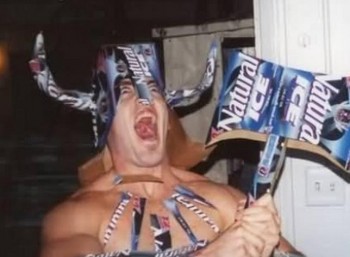
Caitlin Flanagan’s monster fraternities story in the Atlantic turns out to be, eventually and at last, a story about… the insurance industry. Which actually makes it more fascinating, not less! This is particularly intriguing:
Despite everything you may think you know about life on frat row, there are actually only two [Fraternal Information and Programming Group]-approved means of serving drinks at a frat party. The first is to hire a third-party vendor who will sell drinks and to whom some liability — most significant, that of checking whether drinkers are of legal age — will be transferred. The second and far more common is to have a BYO event, in which the liability for each bottle of alcohol resides solely in the person who brought it. If you think this is in any way a casual system, then you have never read either the FIPG risk-management manual or its sister publication, an essay written in the surrealist vein titled “Making Bring Your Own Beverage Events Happen.”
It gets worse, and so much weirder. But in short: do not let your child join a frat unless you want to be eventually sued and/or bankrupted.
Also. It’s pretty rich that Flanagan opens her story on fraternities with someone shoving fireworks up his ass and ends it by castigating Wesleyan for blaming a rape victim for her own assault, but then, when she goes to catalogue the events that instigate lawsuits at frats, she describes as a common occurrence a “particular variety of sexual torture reserved for hazing and best not described in the gentle pages of this magazine.” What is this coy business??? How gentle indeed are these pages???
Meet Some Of The Children Who Died In Los Angeles Because The City's Child Protection System Is...
Meet Some Of The Children Who Died In Los Angeles Because The City’s Child Protection System Is Broken
by Natasha Vargas-Cooper
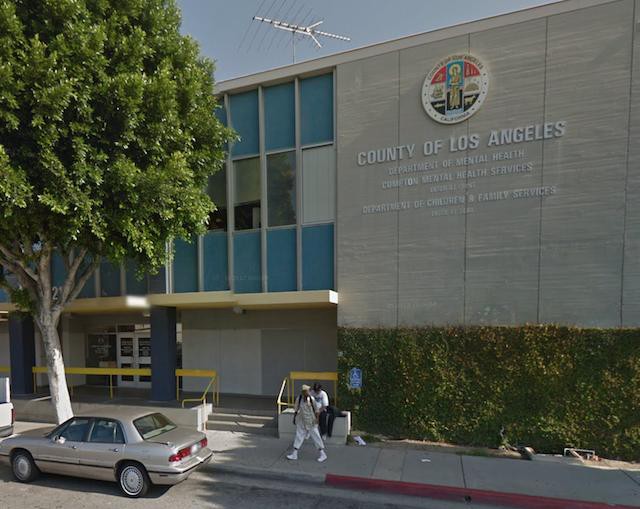
Between 2008 and 2011, more than seventy children who passed through the Los Angeles County Department of Children and Family Services have died due to child abuse or neglect. Many of the lives and deaths of these children have been rigorously documented by Los Angeles Times reporter Garrett Therolf and by the paper’s invaluable Homicide Report blog.
Spurred at last into action by the death in 2013 of a third-grade boy, Gabriel Fernandez, who was tortured to death by his mother and her boyfriend in Palmdale despite at least six child abuse claims logged against the boy’s mother with DCFS, the Los Angeles County Board of Supervisors assembled a Blue Ribbon Commission to come up with a series of sweeping reforms for the child welfare agency. Preliminary recommendations coming out of the Commission at the end of December included hiring hundreds more social workers, yanking up the standards of training, and constructing a cross-agency database so social workers could more adequately check medical and criminal files of foster parents. There was even mention of a child welfare czar, a single public administrator anointed with the power to impose reforms across agencies. County Supervisors assured the media and public that they were prepared to implement wide scale changes.
And then at a meeting of the Board of Supervisors, it seems as if the urgency — and money — to take on the Commission’s “life-saving” reforms has dried up. The Commission’s calls for immediate action on their preliminary recommendations were met with phrases like “cost neutrality” and “economic feasibility” and “doing what is being recommended with existing resources.” Ultimately, the board only approved one of the Commission’s initial recommendations: to install a member of law enforcement at local DCFS offices to expedite background searches for emergency placement foster parents. They said they’d wait for a final report in April to consider the rest. The Commission, in turn, explained that the recommendations would not be changing for the final report.
Supervisor Mark Ridley-Thomas endorsed the Commission’s recommendation to have a nurse attend DCFS house visits that involve infants. And then the board voted against the motion, until further fiscal analysis could be made.

When paramedics arrived, eight-year old Gabriel Fernandez was not conscious. His skull was cracked. Three ribs were broken. Bruises and burns covered his body. Two teeth were knocked out of his mouth. X-rays would later show that the third-grader had BB pellets embedded in his lung and groin. Gabriel’s mother, Pearl Fernandez, 29, and her boyfriend Isauro Aguirre, 32, told the paramedics that Gabriel’s injuries were self-induced. Later Aguirre said that he delivered ten or so blows to Gabriel’s stomach for lying and “being dirty.”
Before Gabriel’s death, his mother was the target of six investigations of child abuse. One of Gabriel’s teachers reported the boy coming to school battered. One of Gabriel’s therapists reported that Gabriel said that he was forced to perform oral sex on a family member. Gabriel told a teacher he’d been beat with a belt buckle until he bled and his mother shot him with a BB gun. Gabriel wrote a suicide note, found by his teacher.
According to documents obtained by the LA Times and a recent wrongful death lawsuit filed by Gabriel’s grandparents, Gabriel was never interviewed privately by a social worker about his abuse. Fernandez and Aguirre have been charged with first degree murder of a child. The two have yet to enter their pleas. Two months after Gabriel’s death, four DCFS employees related to his case were fired.

The Department of Child and Family Services refuses to release the case details of child fatalities. But a confidential audit on child fatalities from 2010 to 2011, conducted by the Los Angeles County Board of Supervisors’ Children’s Special Investigation Unit, isolated at least thirteen children’s deaths that resulted from systemic “weaknesses” inside DCFS. Here is what happened to those children.
Vyctorya Sandoval
Four days after Vyctorya was born she and her eight siblings were removed from their parents, Jennifer Dalhover and Joseph Sandoval, because of domestic violence and charges of sexual abuse between the couple.
1. The couple entered a plea deal. Sandoval agreed to plead no contest to second-degree murder and was sentenced to 15 years to life in prison. Dalhover pleaded no contest to child abuse and was sentenced to six years in prison.
Dalhover and Sandoval also had 11 child abuse complaints filed against them with DCFS. Vyctorya was placed in three different foster homes before reaching a couple in Placentia who were willing to foster and then adopt her in April, 2010. After Dalhover and Sandoval vanished for several months — falling out of contact with social workers and parenting counselors — they resurfaced at a Pasadena homeless shelter with another newborn baby in September, 2010. Less than three months after the couple left the homeless shelter, DCFS decided to reunite Vyctorya, then 25 months old, with her biological parents. At the reunification hearing, Vyctorya’s social worker, foster care supervisor (you can read her letter here), and siblings attended to make statements against putting Vyctorya back with her parents.
During the seven months Vyctorya was back at home she lost almost half her bodyweight and her hair was falling out in clumps. DCFS closed her case. Two months later Vyctorya died of severe malnutrition and physical abuse. Medical reports showed she died hungry and thirsty. 1
Viola Vanclief
2. The Los Angeles Times has written extensively on LA county’s privatization of foster care. The agency that approved Barker, United Care, is now defunct after the county terminated its contracted in 2012. More child deaths occur among children in private foster agency homes than government-run homes.
3. Barker was convicted of second degree murder in 2012 and sentenced to 25 years to life. Julian, who claimed to not be in the house during the fatal beating, pleaded no contest to an accessory charge and was sentenced to three years. Barker and Julian married less than a month after Viola’s death.
Viola Vanclief was born to a schizophrenic mother who refused to take her medication. Viola was put into foster care for a short period of time before being reunified with her mother — but was removed again when investigators found that Viola’s mother was still not taking her medication, was abusing cocaine, and had violently attacked another person. Viola, still an infant, was placed with Kiana Barker, who had seven child abuse and neglect complaints filed with DCFS regarding her own two biological children. Barker obtained a waiver through a private foster care agency to allow her to foster and adopt children; according to state code, Barker should not have been allowed to do so.2 Barker was also living with her boyfriend, James Julian, a convicted felon, while Viola was in her care. Barker was approved to adopt then two-year-old Viola by DCFS in March, 2010. Barker called 9–1–1, saying that she accidently struck Viola with a hammer while trying to free the toddler from being stuck inside a bed frame. Viola died from her injuries, which medical examiners say were likely inflicted by a belt and were sustained a full day before Barker called 9–1–1.3
Cynthia F.
Cynthia’s mother also had a documented history with DCFS. She had lost custody of her four other children due to drug abuse. A child abuse/neglect call was made to the DCFS hotline the day Cynthia was born, because her mother gave birth to her while on methadone. But whoever answered the DCFS hotline that day left Cynthia’s risk assessment completely blank, so any investigation into Cynthia’s well-being was “evaluated out” and no investigation took place. Cynthia died at two months, when her parents, who were drunk at the time, left her face-down in her crib.
Christian and Michael Dixon
Christian, 5, and Michael, 1, were shot to death by their mother, LaTonya Dixon, in a failed murder-suicide attempt. While pregnant with Christian, Dixon aged out of child services and transitioned into an adult services program, although she was not compliant with her treatment plan. Dixon had a documented history of mental illness as well as mild to moderate developmental disabilities. After Dixon gave birth to Christian, two abuse claims were referred to the DCFS, alleging neglect of the infant. The referrals were deemed “unfounded” and no services through DCFS were offered.
Jorge Tarin
Eleven-year-old Jorge Tarin told a school counselor that he wanted to kill himself “because I’m tired of people hitting me all the time.” Jorge told the counselor that he was beaten by his mother and stepfather and described the abuse as “unbearable.” Jorge said he would kill himself either with a gun or with a rope. The counselor called DCFS. The school decided Jorge was well enough to go home at the end of the school day. He was put on the school bus with a note asking for Jorge’s mother to call the counselor.
Two emergency service workers and police officers came to Jorge’s family apartment. They interviewed Jorge privately; he said he no longer planned to kill himself. The boy shrugged when asked if he was afraid of his mother or stepfather. The officer searched the home for a weapon and found none. The emergency workers interviewed Jorge’s mother, who denied hitting him. The DCFS workers and the police officer left Jorge.
DCFS had visited Jorge before. His file noted violence, drug abuse and neglect at the hands of his parents, starting from his infancy. Jorge spent over a year in foster care homes before being reunified with his mother the year before his suicide. According to the Los Angeles Times, in 2007 DCFS paid $5.9 million for about 2,400 wireless tablets so employees could access case files remotely — but the department only bought 400 wireless cards. “The overwhelming majority of the tablets gather dust on social workers’ desks,” Garrett Therolf wrote. Shortly after DCFS workers left, Jorge went to his mother’s bedroom and hanged himself using a jump rope. Eighteen days after his death, Jorge was entered again into the DCFS database as “high risk.”
Erica Johnson
Erica, 2, was beaten to death by her mother’s 21 year-old boyfriend, Davon Smith, on October 7, 2010, at her grandmother’s house. A DCFS complaint was made to the hotline because both her parents, Taelor Moore, 16, and Eric Johnson, 17, were on probation, and both were former DCFS dependents. Before Erica was born, Moore’s mother, father and grandparents alerted DCFS about Moore’s propensity for being violent with her relatives. The DCFS worker who took the hotline call filled out a risk-assessment worksheet for Erica (she was deemed at “high risk” for abuse) and recommended the case be promoted. The case was closed because the allegations in the risk assessment were deemed “unfounded.” According to DCFS, the criteria for an allegation to be “unfounded” is that an investigator find the accusation to be 1) false 2) inherently probable to involve an accidental injury or 3) did not constitute child abuse or neglect. Moore was incarcerated at the time of her daughter’s death.
Adrian R.
4. The point of Voluntary Family Maintenance Services (such counseling, parenting classes, substance abuse testing) is for DCFS to meet a legislative mandate that lowers the amount of families reliant on out-of-home services mandated by a judge (such as rehab and foster care). The motto here is that “court is the last resort.” But because a family voluntarily enrolls in one of these programs does not mean the potential risk to the child’s safety is any lower than the a child whose family undergoes court-ordered services.
Adrian, who was likely over 13, as he was on probation, died after taking 300 pills prescribed to his grandmother for her gout. Adrian’s father had three separate allegations of physical abuse and was also enrolled in Voluntary Family Maintenance classes.4 After Adrian’s father completed the VMF classes, a call came into DCFS saying that Adrian’s father continued to beat Adrian. Though Adrian showed physical marks of abuse, all three allegations against his father were listed as “unfounded” based on Adrian’s father’s denials.
Abigail Morales
Abigail was removed from her parents’ care shortly after she was born, due to malnutrition and inadequate weight and height caused by parental neglect. Abigail lived with a relative for two years before DCFS returned her — along with two siblings, both under 5 — to her parents.
Abigail’s father, Michael Lara-Morales had an active arrest warrant for failing to enroll in a 52-week violence prevention program — one of the terms of his probation. The couple had ongoing criminal proceedings that required them to be in jail on weekends for the next 11 months.
5. Abrego pleaded no contest to second-degree murder and child abuse and received 17 years to life. Lara-Morales pleaded no contest to one count of voluntary manslaughter, three counts of child abuse and admitted allegations that he inflicted great bodily injury on Abigail. He was sentenced to 20 years.
These crucial details only came to light after an investigation into Abigail’s death. The DCFS employee in charge of her case left narrative sections blank and only checked required boxes. In the months following Abigail’s return, her mother, Miriam Abrego told a Family Maintenance program worker that she had an “intense dislike” for Abigail, who was thirty months old at the time. The program worker reported this to DCFS but no action was taken. Later, the worker called the DCFS child abuse hotline directly when he discovered bruises on Abigail. The DCFS emergency responder did not interview Abigail’s grandparents, siblings, or daycare provider, all of whom could have provided details about Abigail’s parents. The case was closed. A month after the emergency worker’s visit, Abigail was in full cardiac arrest when her parents finally called 9–1–1, a full day after they had severely beaten her. When paramedics arrived at the couple’s home, they claimed Abigail fell. They had tried cover her bruises with blue paint. A few days later she was taken off life support and died at age 2. 5
Deandre Green
Deandre, age 2, was beaten to death by his mother’s 26-year-old boyfriend, Hector Ernest Jr. There were two open reports with DCFS on child abuse claims, filed just four weeks before the toddler’s death. One report came from Deandre’s biological father, who suspected Deandre’s mother and boyfriend were abusing the boy. Deandre’s father took him to a Hawthorne police station to show officers the bruises on his son’s body. Another hotline abuse complaint came from Deandre’s cousin. To determine if complaints that come in through the hotline have enough merit to them to launch a formal investigation into child abuse or neglect, the Emergency Service Worker must answer the following questions through interviews with family and others who have contact with the child: Did the alleged abuse/neglect occur? If so, what is the level of risk for the abuse/neglect to happen again? Is the child safe? If not, what needs to be done to ensure the child’s safety?
The Emergency Service Worker assigned to Deandre spent one month returning to the wrong address (eight attempts in 22 days), despite the department having the correct address on file. At the time of Deandre’s death no one from DCFS had made contact with him.
Amanda C.
Amanda was severely disabled. She suffered from a degenerative disease that depleted the white matter of her brain and a condition that enlarged her heart and liver. She was not receiving medical treatment for the latter condition. There were ten separate calls to the DCFS hotline about Amanda’s family — several regarding possible sexual abuse. Some of the allegations had to do with Amanda’s father: masturbating while watching Amanda’s sisters shower, as well as entering and leaving the girls’ bedroom at strange hours.The family was enrolled in a Voluntary Family Maintenance classes.
6. The report argues that often social workers defer to medical opinions over common sense and on-the-ground judgement. For instance, because a bruise or cut could have come from rough play is excused, even though a family may have multiple abuse complaints filed against them.
7. Amanda showed swelling and redness around her vagina and anus, her hymen was perforated, and there what autopsy doctors considered gashes from a fingernail on her labia.
DCFS referred Amanda to a medical hub to be examined for sexual abuse. Medical hubs are healthcare programs co-administered by the Department of Health Services and DCFS. The hubs provide both routine examination of children in DCFS’s care and also conduct forensic interviews and examinations for open DCFS abuse cases. Social workers rely heavily on the reports of hub medical professionals — at times to detriment, according to the confidential report.6 The hub that Amanda was referred to refused to examine her for signs of sexual abuse unless or until she mentioned the abuse to a counselor. DCFS then closed Amanda’s case as “inconclusive.” Two years later, Amanda died. An examination of her body found that she suffered sexual trauma within 48 hours of her death.7 The coroner who examined Amanda’s body said she could have died from three things: cardiac arrest from her heart condition, the physiological stress and pain from blunt force sexual trauma, triggering an arrhythmia or a heart attack, or from being suffocated with a pillow.
Valerie Deras
8. A jury convicted Deras of murder in fewer than 10 minutes. He received a sentence of 50 years to life.
Valerie, nine months old, was beaten to death by her father, twenty-year-old Jose Deras, during a fight with Valerie’s mother. At the time of her death there was an open DCFS investigation regarding injuries sustained by her two-year-old brother, Orlyn, who had a spinal fracture and a broken femur. His father claimed that Orlyn had slipped out of his arms while they were walking on a sidewalk. The medical staff believed Orlyn’s injuries were consistent with his father’s explanation. It took seven weeks for an emergency worker to initiate the request for a second opinion from the medical hub, and so the examination of Orlyn took place three months after his injury. Within three weeks of Orlyn’s examination at the hub, Valerie was murdered.8
The Blue Ribbon Commission is set to release their final recommendations in April.
Natasha Vargas-Cooper is a reporter in Los Angeles.
